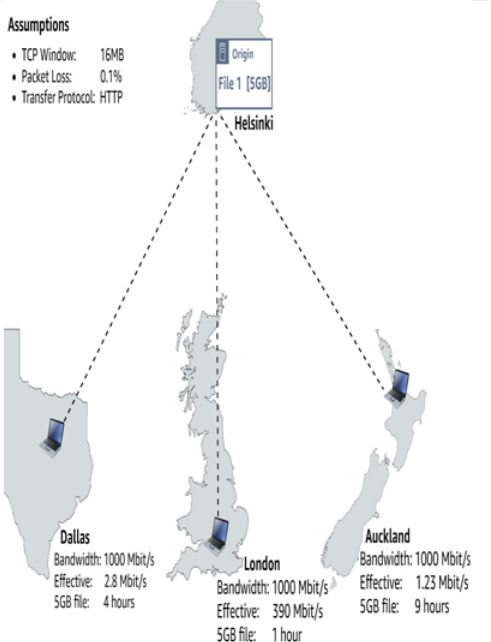Understanding internet challenges – Understanding Network and Security for Near-Edge Computing
There are two types of edge computing where the cloud is concerned – near the cloud and far from the cloud. Near-edge networking assumes reliable high-speed access and is probably what you are familiar with. Servers connecting from a data center over Multiprotocol Label Switching (MPLS), a laptop in a home worker’s apartment with a cable modem, or a mobile device connecting via 5G or Wi-Fi are all examples of near-edge networking.
In this chapter, we’re going to cover the following main topics:
Understanding internet challenges
Using a private wide-area network
Optimizing ingress with global server load balancing
Steering traffic at the network layer with IP Anycast
Addressing TCP issues with HTTP/3 and QUIC
Securing networks at the near edge
Understanding internet challenges
Any device that wants to use resources in the cloud must have a connection to the internet. This is sometimes done over country-specific sovereign networks for sensitive government-related workloads, but most of the time, the connections are done over the public internet. This is far more cost-effective than building a bespoke global network of your own, but the downside is that you don’t get to engineer the internet.
On the internet, once your traffic goes to your ISP, you trust them and all of the other systems between them and your destination to get your traffic where it is going. This is by design. It works out fine – most of the time. Your traffic may take a less-than-ideal path along the way, increasing its latency. Or perhaps, while crossing a dozen devices to get where it’s going, one packet out of a thousand is lost and has to be retransmitted.
The impact of latency and packet loss
One in a thousand (0.1%) packet loss might sound like a small problem. Any amount of packet loss limits the effective throughput that can be achieved for a given flow across the internet – and a 0.1% loss is considered quite high. This problem is further magnified when the distance between the client and the server is higher:

Figure 2.1 – Impact of latency and packet loss on HTTP transfers
Figure 2.1 shows three examples of clients experiencing 0.1% packet loss in different parts of the world. Even though each client has a 1 Gbit/s fiber connection to their ISP, the effective throughput that can be achieved varies widely due to different amounts of latency compounding the problem to different degrees. To understand how these values were arrived at, we need to review some of the factors that determine the effective throughput of any given TCP connection.
You may also like
Archives
- August 2024
- July 2024
- June 2024
- May 2024
- April 2024
- March 2024
- February 2024
- January 2024
- December 2023
- November 2023
- October 2023
- September 2023
- August 2023
- July 2023
- May 2023
- April 2023
- February 2023
- January 2023
- November 2022
- October 2022
- September 2022
- August 2022
- July 2022
- June 2022
- May 2022
- April 2022
- December 2021
- November 2021
- October 2021
- September 2021
- June 2021
Calendar
| M | T | W | T | F | S | S |
|---|---|---|---|---|---|---|
| 1 | 2 | 3 | 4 | 5 | 6 | |
| 7 | 8 | 9 | 10 | 11 | 12 | 13 |
| 14 | 15 | 16 | 17 | 18 | 19 | 20 |
| 21 | 22 | 23 | 24 | 25 | 26 | 27 |
| 28 | 29 | 30 | 31 | |||
Leave a Reply